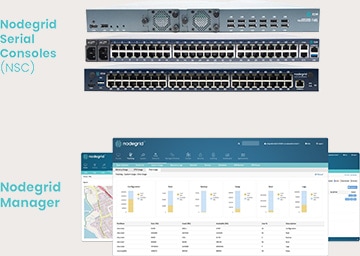Secure, Resilient, and Automated IT Infrastructure Control
Out-of-Band Management Solutions to Keep You Connected to Critical Infrastructure 24/7

Managing IT infrastructure across multiple locations is complex especially when uptime, remote access, and security are non-negotiable. Out-of-Band Management (OOBM) solutions are designed to give IT teams full control and visibility into their environments. Even in the middle of a network outages.
With this intelligent platform, you can securely monitor, manage, and automate distributed infrastructure without being physically on-site. Whether you’re responsible for a data center, edge location, or remote facility, OOBM solutions makes sure you’re never out of reach.
Why Out-of-Band Management Matters
Access and control infrastructure during primary network failures
Reduce downtime and mean time to resolution (MTTR)
Strengthen Zero Trust security posture
Simplify remote deployment and troubleshooting
Enable AI-driven insights and automation across infrastructure
Key Capabilities of Out-of-Band Solutions
Network Resilience & Survivability
Secure Remote Access to Serial and IP Devices
Centralized Management & Orchestration
Zero-Touch Provisioning (ZTP)
Automation & Policy-Based Workflows
Converged IP and Serial Device Management
Failover Connectivity with 5G, LTE & FirstNet
Modular, Scalable Hardware Options
Virtualization Support (KVM, Docker)
Environmental Monitoring via USB Sensors
AI-ready infrastructure for proactive monitoring and remediation
What Sets Out-of-Band Solutions Apart from Others?
This solution combines the reliability of traditional serial consoles with the flexibility of modern OOBM. Our platform enables agencies and enterprises to:
Operate securely under Zero Trust principles
Automate repetitive tasks and configurations
Gain centralized visibility into all connected infrastructure
Minimize truck rolls and human error
Learn How OOBM Can Support Your Mission
Out-of-band management is more than a backup, it’s a smarter way to run your infrastructure. Whether you’re modernizing your data center or supporting edge and remote locations, these solutions provide the tools you need to maintain continuity and control. Learn more about ZPE Systems Out-of-Band Management Solutions.
Fun Fact: Serial consoles have been around since the 1980s. Today, they’ve evolved into robust platforms that support secure automation, remote orchestration, and IT resilience in the most demanding environments.




